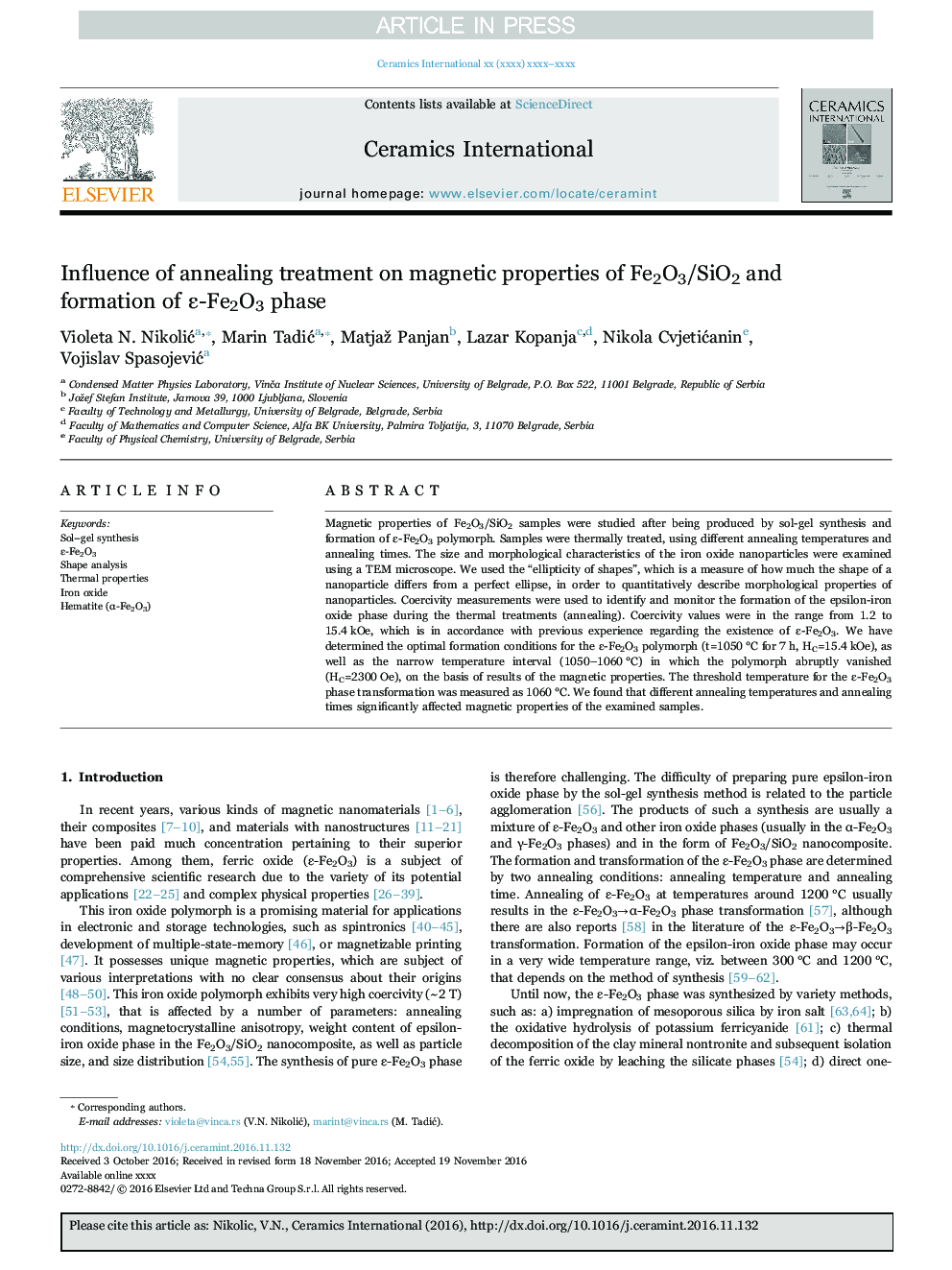| Article ID | Journal | Published Year | Pages | File Type |
|---|---|---|---|---|
| 5438994 | Ceramics International | 2017 | 9 Pages |
Abstract
Magnetic properties of Fe2O3/SiO2 samples were studied after being produced by sol-gel synthesis and formation of ε-Fe2O3 polymorph. Samples were thermally treated, using different annealing temperatures and annealing times. The size and morphological characteristics of the iron oxide nanoparticles were examined using a TEM microscope. We used the “ellipticity of shapes”, which is a measure of how much the shape of a nanoparticle differs from a perfect ellipse, in order to quantitatively describe morphological properties of nanoparticles. Coercivity measurements were used to identify and monitor the formation of the epsilon-iron oxide phase during the thermal treatments (annealing). Coercivity values were in the range from 1.2 to 15.4 kOe, which is in accordance with previous experience regarding the existence of ε-Fe2O3. We have determined the optimal formation conditions for the ε-Fe2O3 polymorph (t=1050 °C for 7 h, HC=15.4 kOe), as well as the narrow temperature interval (1050-1060 °C) in which the polymorph abruptly vanished (HC=2300 Oe), on the basis of results of the magnetic properties. The threshold temperature for the ε-Fe2O3 phase transformation was measured as 1060 °C. We found that different annealing temperatures and annealing times significantly affected magnetic properties of the examined samples.
Related Topics
Physical Sciences and Engineering
Materials Science
Ceramics and Composites
Authors
Violeta N. NikoliÄ, Marin TadiÄ, Matjaž Panjan, Lazar Kopanja, Nikola CvjetiÄanin, Vojislav SpasojeviÄ,
